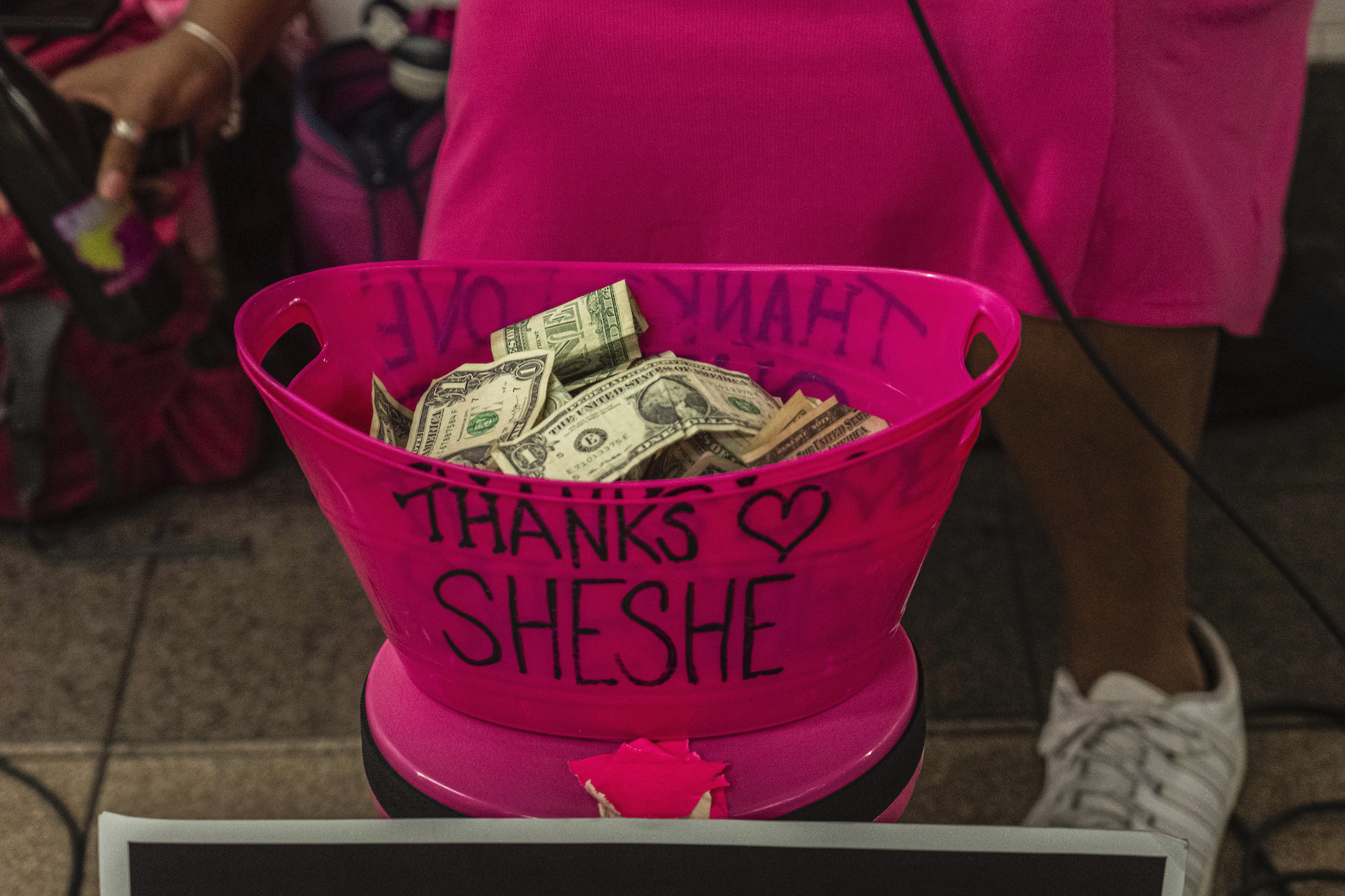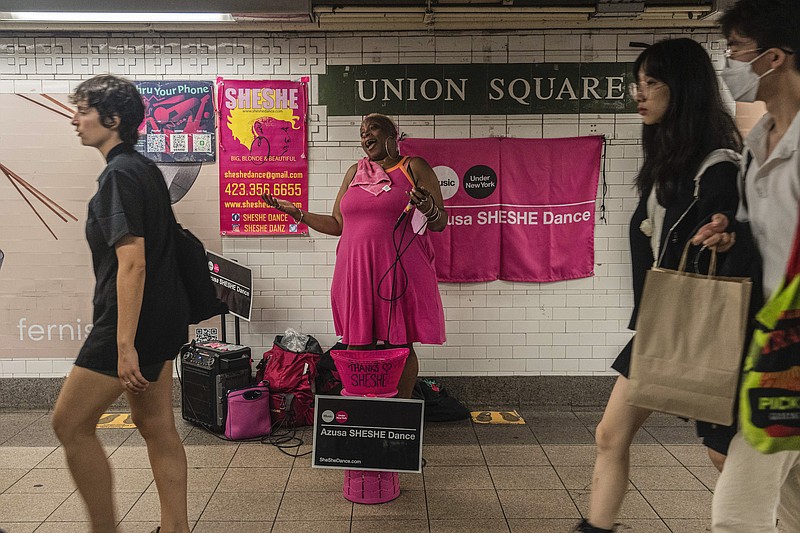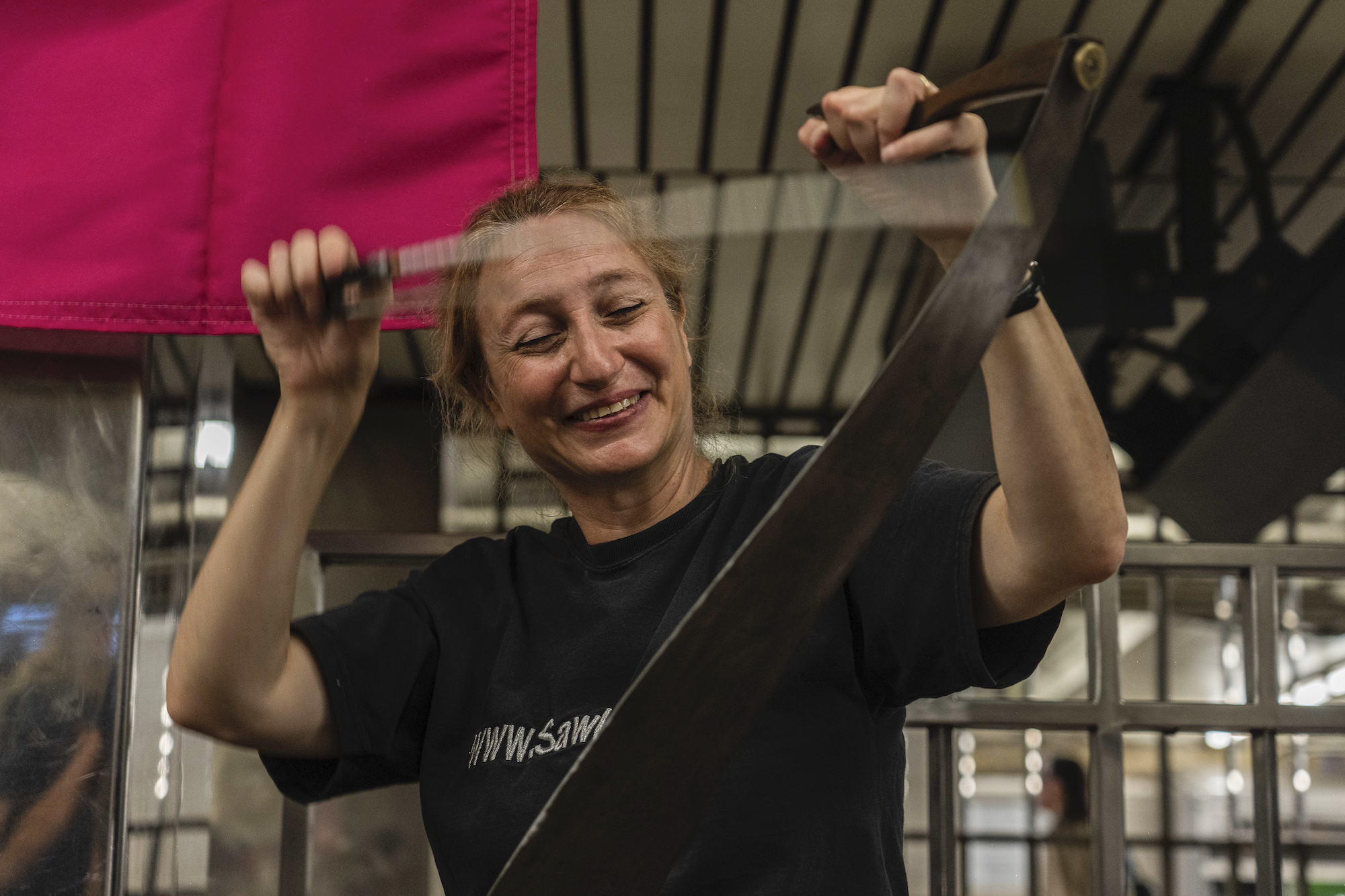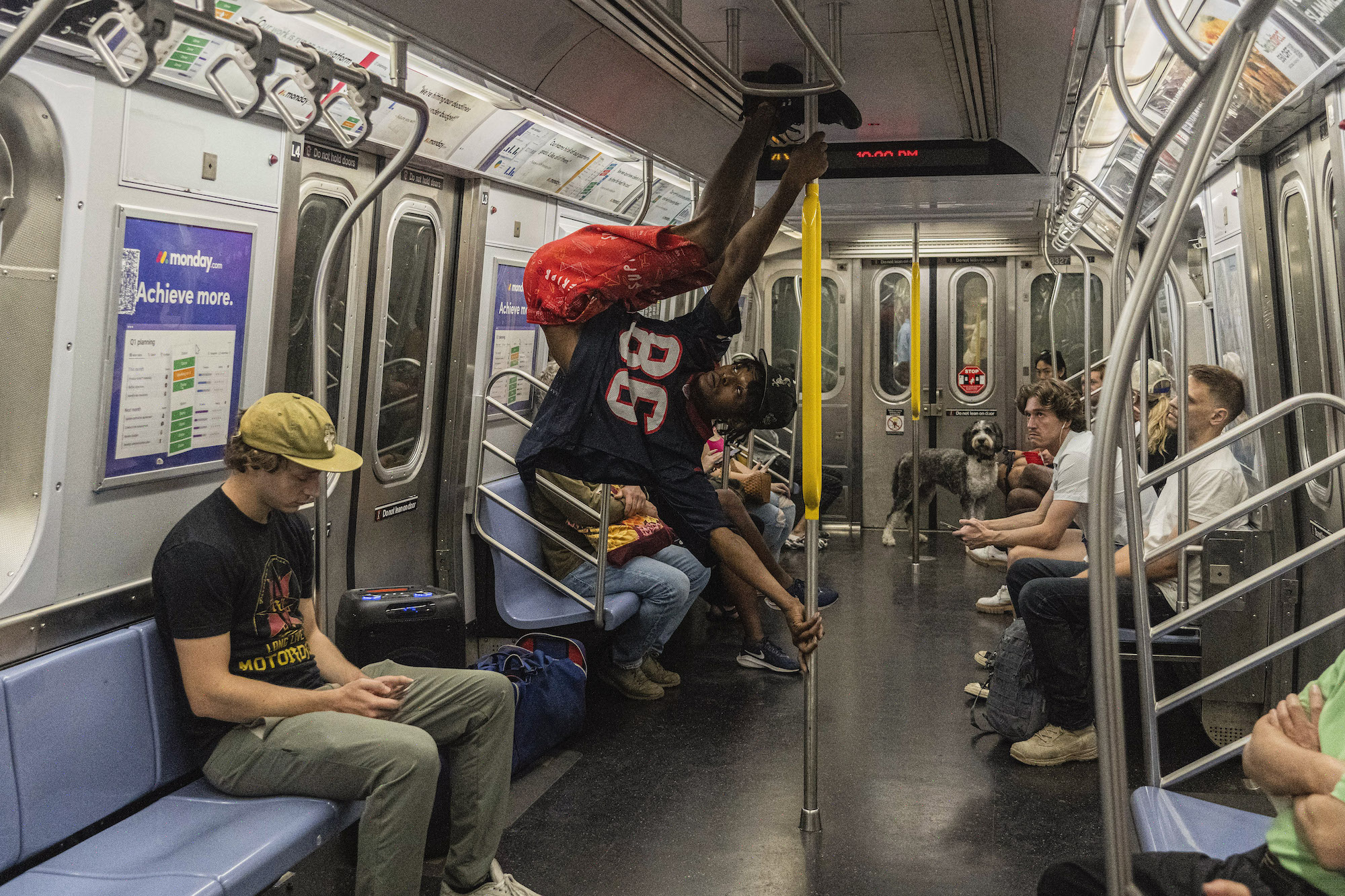NEW YORK -- As Azusa Dance belted out the chorus of Aretha Franklin's "Chain of Fools" just past the turnstiles at the 34th Street-Herald Square subway station, a man dropped a dollar bill into her pink bin. "Thank you, darling," she said with a bow.
Like many of the buskers who perform in New York's subways each day, Dance saw her tips fall well below what she had been accustomed to when she returned to serenade straphangers again last year in a transit system struggling to regain riders after the sharp pandemic decline. But as more people return to work and the subways, and as the holiday season begins, she has noticed that her pink bin is getting a bit fuller.
"It's something about that time of the season," said Dance, a Chattanooga native who performs as SheShe. "People are just more generous."
There are signs things may be looking up. Subway ridership hit a pandemic-era record Oct. 27, with close to 3.9 million people -- the most on a single day since the pandemic struck but still just 67.5% of a comparable prepandemic day. Now some of the artists who perform underground each day -- playing steel drums and Chinese erhus, singing operatic arias, squeezing accordions and coaxing ethereal sounds from musical saws -- are seeing the difference in their tip jars and expectantly open instrument cases.
Iain Forrest, who plays an electric cello at Grand Central under the stage name "Eyeglasses," said things seemed to be coming "full circle" to how they used to be.
"I would say now we're back to the point where the cello case would be filled to the brim," he said.
 Money is piled inside the tip jar of Azusa Dance, who sings as SheShe in Union Square, Herald Square and other subway stations, as she performs inside the Union Square subway station in New York on Sept. 13, 2022. Most subway buskers say that they do it for the love of performing, not for the money. But on good days, the money can add up. / Hiroko Masuike/The New York Times
Money is piled inside the tip jar of Azusa Dance, who sings as SheShe in Union Square, Herald Square and other subway stations, as she performs inside the Union Square subway station in New York on Sept. 13, 2022. Most subway buskers say that they do it for the love of performing, not for the money. But on good days, the money can add up. / Hiroko Masuike/The New York TimesNatalia Paruz, who makes music by contorting and bowing a steel handsaw as the "Saw Lady" in the Times Square station, said that she had dearly missed live performance when it was banned and that she had been encouraged recently by the returning crowds.
"It's a sign that life is resuming in full force," she said.
The return of musicians to the subways last year, after more than 14 months away, was one of those small signs that the city was beginning to edge back toward normal. Another step came in September when the mask mandate on subways was lifted, so many performers could once again smile at their audiences. About 70% of performers in the Metropolitan Transportation Authority's official Music Under New York program are back, according to Sandra Bloodworth, the authority's arts and design director.
A dozen artists who regularly sing, play instruments or dance underground said in recent interviews along various subway lines that they were motivated less by their desire for monetary gain than by their fervor to perform.
"Busking is not a job," said Paruz, 45, who was among the last to stop performing in the subway in March 2020 and the first to return in June 2021. "It's not an occupation. It's a vocation. So that means it's something that you do for love. You don't expect a pot of gold at the end of the rainbow."
Forrest, who sometimes plays a mean "Despacito" on his electric cello and has played in the subways since 2016, said that he had been heartened in recent months by bigger crowds that seem more engaged in his performances, sometimes singing and dancing along.
"When they come up, they start singing spontaneously, and I love that," he said. "It's hard to find a place in New York where people aren't buried in their phones, right, and actually just focused on the moment."
It has been more than a year since the Music Under New York program was reintroduced, and Bloodworth said that its return had felt healing. Before the pandemic, the program held more than 12,000 performances annually by 350 different artists and groups, including a cappella groups and mime performances.
"You never have to tell a New Yorker why the arts are important," Bloodworth said. "They know."
As ridership returns, performers from outside the official program have returned to the subways, too, hoping to jump-start their musical careers.
Before the pandemic, Jerry Jefferson, a 23-year-old dancer who hops between subway cars kick-flipping ball caps and performing 360-degree turns, earned enough from his tips to help pay for tuition at Queensborough Community College. Then, during the height of the pandemic, he recalled, tips fell off sharply. There were far fewer riders, and those who were still on the trains were reluctant to get too close. Now that ridership has picked up, he said, he is considering reenrolling in the spring to work toward his art degree. One day earlier this fall, he took home about $80 after about four hours on the L train.
"I like making people smile, I can make money at the same time, and I'm staying out of trouble," said Jefferson, who is known as Jay Mac.
SheShe, who performs at Herald Square, Union Square and Times Square, said that before the pandemic struck her tips could add up to rent money -- as much as $450 after just a few hours of singing. When she returned last year, she said, she found herself taking home less than half that ("just pocket change," she lamented) on a good day. It could be a struggle to draw pre-pandemic-size crowds.
"In between trains, I'm singing to the wall," said Dance, who left a good research job in Chattanooga in 2016 to come to New York to try to expand her career as a singer. "It's not until the train opens up and people are getting off to switch that we even have people walking through, which is strange."
But in recent weeks, she said, she had been receiving more large bills, including fives and tens, which she attributes to the beginning of the holiday season.
"At Herald Square and Times Square, it was a significant difference from those tip buckets, than what I had before," Dance said. "That's how I know the season is here."


